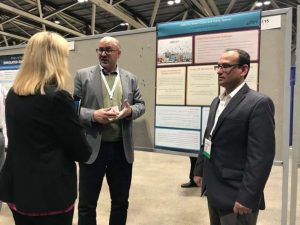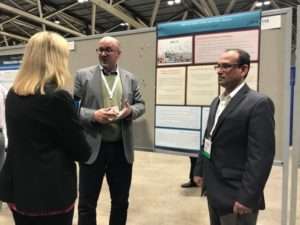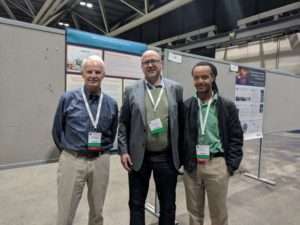
Recently, Youssef Abdelilah, co-chair of the CBRS Alliance Public Spaces team within the Business Working Group, and myself attended the Smart Cities Connect Conference and Expo to discuss the current state of CBRS and its significance to smart city projects. The event attracted approximately 2,500 thought leaders from across the country, including more than 400 city managers and city CIO’s. There were three major goals for the event: facilitate the gathering of efforts by cities and communities to bridge the digital divide; discuss the use of IoT technology to reduce energy use and improve mobility; and leverage data for smarter decision making and better quality of life. 
The CBRS Alliance participated in the conference’s poster session and highlighted the benefits of utilizing shared spectrum in the CBRS 3.5 GHz band for deploying a wireless network to address the Digital Divide and facilitate a Private LTE network for city IoT applications, such as smart transportation and parking. City administrators, consultants, university staff, professors and PhD students, network technologists and engineers, and innovation directors for city and municipalities all stopped by the poster session to discuss their needs and discuss the innovative technology that can help solve their immediate needs and long-term vision. Participants were very engaging in their discussions and once they understood the scope of CBRS, many expressed a strong interest in learning more about the technology and its diverse use cases. Visitors were quick to come up with how they could use CBRS to solve some of their own unique connectivity and applications needs.
You can find a digital copy of the poster we presented here.
The use case of utilizing a CBRS network to extend a city’s fiber network and bridge the Digital Divide was well received by the attendees, both because it aligned with the theme of the conference and it solved an immediate and urgent need. We believe this is the first use case for CBRS in Smart City applications in 2018.
One potential use case for CBRS in smart cities would be for municipalities to deploy a wide area CBRS network to cover geography that is not well served by current Internet providers due to economic reasons which has created a digital divide in most cities. Customer premises equipment (CPE) devices can be loaned out at schools and libraries to enable student to access their homework online, and CPE’s could also be sold to citizens through an open access model by competing internet service providers.
During the event, Mark Farrell, mayor of San Francisco, talked about his efforts to deploy a municipal fiber network to offer affordable and ubiquitous Internet to all citizens utilizing an open access model. Bruce Patterson, technology director of the City of Ammon, Idaho described the open access fiber connectivity network that provides Internet access to his suburban community. Matt Sayre of the Technology Association of Oregon discussed the City fiber broadband network in Eugene, Oregon. Despite their varying geographies, one common thread was that all of these municipalities were engaging in efforts to deploy solutions to bridge the digital divide utilizing innovative business models.
 Another common theme discussed during the event were the requirements needed to connect environmental sensors, energy meters and other IoT devices that cities and universities planned to deploy. Participants were interested in understanding the capabilities of a CBRS network to meet the requirements of this use case. The extension of the CBRS network deployed to a city-wide Private LTE network would also support this use case.
Another common theme discussed during the event were the requirements needed to connect environmental sensors, energy meters and other IoT devices that cities and universities planned to deploy. Participants were interested in understanding the capabilities of a CBRS network to meet the requirements of this use case. The extension of the CBRS network deployed to a city-wide Private LTE network would also support this use case.
In summary, the Smart Cities Connect Conference and Expo provided a great opportunity for the CBRS Public Spaces Business Working Group to validate the value proposition of CBRS. The overall feedback was positive and provided us with important insights that will help us shape the future of CBRS in the Smart City applications.
